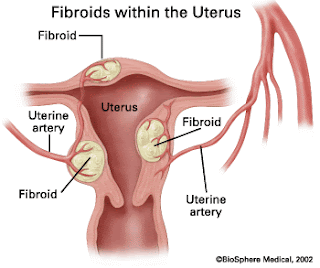HOME
 The
female reproductive system is more complex than that of the male reproductive
system. In addition to producing female sex cells, known as ova (eggs), the
female body also protects and nurtures a developing baby for about nine months
while it grows within the woman’s uterus (womb). A woman’s breasts can provide
nourishment for newborns.
The
female reproductive system is more complex than that of the male reproductive
system. In addition to producing female sex cells, known as ova (eggs), the
female body also protects and nurtures a developing baby for about nine months
while it grows within the woman’s uterus (womb). A woman’s breasts can provide
nourishment for newborns.
FEMALE REPRODUCTIVE SYSTEM
 The
female reproductive system is more complex than that of the male reproductive
system. In addition to producing female sex cells, known as ova (eggs), the
female body also protects and nurtures a developing baby for about nine months
while it grows within the woman’s uterus (womb). A woman’s breasts can provide
nourishment for newborns.
The
female reproductive system is more complex than that of the male reproductive
system. In addition to producing female sex cells, known as ova (eggs), the
female body also protects and nurtures a developing baby for about nine months
while it grows within the woman’s uterus (womb). A woman’s breasts can provide
nourishment for newborns.
BREST
During
pregnancy, breast size increases as milk-producing glands known as lobules
develop in preparation for breast-feeding. Breast milk can provide all the
nourishment a newborn needs. As a newborn breast-feeds, the sucking action
stimulates the release of oxytocin, a hormone that promotes milk flow.
OVARIES
The
primary reproductive organs of a female are the ovaries, a pair of almond-
shaped glands. At puberty, ovaries produce about 400,000 eggs. Each month an
egg is released from the ovary and travels down one of the fallopian tubes. If
the egg is released around the time of sexual intercourse and it meets and
fuses with a male’s sperm, it becomes fertilized. If an egg is not fertilized,
it moves from the fallopian tube to the uterus and then passes out of the body
in the next menstrual cycle.
UTERUS
The
uterus is a hollow, muscular organ located on top of the bladder. During pregnancy,
a fertilized egg travels to the uterus, embeds within the uterine wall, and
forms a fetus . Around 40 weeks after fertilization, the fetus is born. During
birth, the baby leaves the uterus and travels through the mother’s vagina, a
tube that extends from the uterus to the outside of the body.




I’ve been surfing online more than three hours today, yet I never found any interesting article like yours. It’s pretty worth enough for me. In my opinion, if all webmasters and bloggers made good content as you did, the web will be a lot more useful than ever before.
ReplyDeletehapche za erekciq
hi
ReplyDeleteThis is such a clear and informative breakdown of the female reproductive system—understanding our body's processes is so empowering. While internal health is crucial, many of us also seek external renewal—especially when it comes to visible skin blemishes. For anyone struggling with texture issues, best acne scar treatment options can dramatically transform your skin. At the Acne Scar Center, they use a powerful combination of state‑of‑the‑art laser resurfacing, microneedling, and personalized care plans to restore smooth, radiant skin and lasting confidence.
ReplyDelete